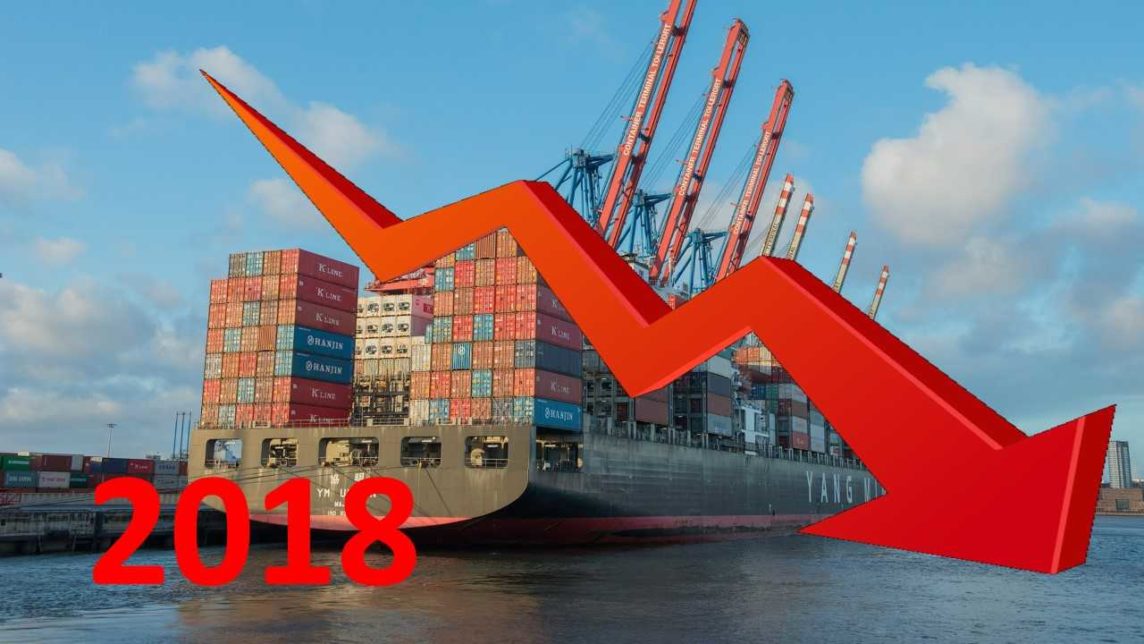After a 2017 in which ocean carriers fought to stabilize their industry, rates may be about to drop again in 2018. Tepid economic forecasts and the persistent problem of overcapacity could keep contract rates low for much of the year. While this may be a boon to shippers, the year ahead has plenty of potential for unexpected costs, from spot rate spikes to increased port and drayage expenses.
2017 was supposed to be the year that ocean carriers pulled themselves out of freefall, but it may have been too little, too late. The wave of consolidations and new alliances helped break the cycle of carriers constantly undercutting one another and accepting non-compensatory rates. The industry also tried to stem the capacity glut, and 2016-2017 saw the most ships scrapped and the fewest ships ordered in recent history. Despite these positive steps, observers have worried that the global carrier community still lacks the discipline to wait for demand to catch up with supply, citing the industry’s history of “irrational” and “self-destructive” behavior.
It seems that at least some in the industry agree with this assessment. In an interview with Transport Topics, Maersk’s Steve Felder called the 2017 recovery “fragile” and warned “we have started to see some pockets of downward pressure.” These words of caution are reflected in numerous metrics, such as Fitch Ratings’ prediction that global container supply will grow by 5.5 percent in 2018, while demand is only expected to grow 4.5 percent. CMA CGM, another shipping company, recently accepted slightly lower 2018 rates in early negotiations of Asia-Europe contracts, and Drewry Shipping Consultants predicted a 5 percent drop in shipping freight growth from last year. The concern over shipping rates is not entirely a commentary on the industry’s failures. Economists point to much larger root causes to a slowdown of global trade, such as US protectionism and China’s retooling of its economy to focus less on exports.
Of course, no one wants carriers to fail or the industry to collapse, and there are encouraging signs that while rates may remain low this year, the overall outlook is still healthier than in the past. Some carriers are optimistic that they will be in a better bargaining position later in the year, when the new shipping alliances have stabilized. For shippers, that makes now the perfect time to be entering contract negotiations, while carriers are cautious and eager for stability. As some have noted, spot rates seem to be on a different trajectory from contract rates, and are expected to spike ahead of the Chinese New Year (February 16), so it’s vital that shippers have their interests represented during these times of high demand. In the past, when contract rates bottomed out, some carriers reportedly left contract cargo on the docks, prioritizing cargo shipped at the higher spot rate. The lesson here is that shippers who want to take advantage of these lower rates should work with 3PL firms who can anticipate such issues.
Shippers should also be aware that while carrier rates may be about to plummet, oceangoing cargo may accrue new expenses in other areas. The rise of megaships has contributed to port congestion, and while US ports are rushing to modernize and provide greater transparency, the process is still in its early stages, and ports are still plagued by long delays and hefty fines. Additionally, it’s still unclear how much the ELD mandate will cause drayage rates to increase, as drivers adjust to the number of turns they can make per day under the new rules.
Not sure how your current ocean rates compare to 2018 contract rates? Give us a call (425-747-7914) or contact us today for a FREE LANE RATE ANALYSIS. Red Arrow is poised to make a competitive difference in your supply chain by leveraging our steamship contracts and past performance expertise in a wide range of import and export markets.



